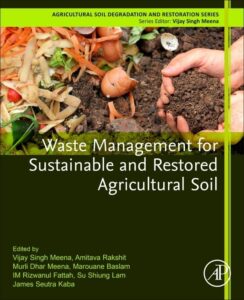Mining plays a vital role in Kenya’s economy. From limestone and gypsum for cement, to gold, soda ash, and rare earth minerals, the sector creates jobs, earns revenue, and builds infrastructure. But mining also takes a toll on the environment and if not checked, the damage can last generations.
This is where environmental auditing comes in.
So, whether you’re an environmental auditor, a student in environmental science, or a sustainability professional working with a mining firm, this blog is your deep dive into how to carry out a proper environmental audit for mining operations in Kenya, what to look for, why it matters, and how to recognize compliance vs noncompliance. Find more posts on audits in different sectors here.
What Is an Environmental Audit (EA), and Why Is It Important in Mining?
An environmental audit is a structured, evidence-based assessment that helps determine whether a company or project complies with environmental laws, policies, standards, and best practices.
In Kenya, environmental audits are required by law under:
- EMCA Cap 387, and
- Environmental (Impact Assessment and Audit) Regulations, 2003
For mining, audits are crucial because:
- Mining alters landscapes permanently (pits, quarries, tailings)
- It affects water, air, soil, and biodiversity
- It has long-term social, health, and environmental implications
Auditing ensures that a mining operation not only follows the law but also operates responsibly, sustainably, and with community trust.
Environmental Audit Checklist for Mining: What to Look For
Let’s break down the key environmental aspects you should inspect during an environmental audit in a mining setup, whether it’s large-scale or artisanal.
1. Land Disturbance and Site Rehabilitation
Why it matters: Mining disturbs huge areas—clearing vegetation, excavating pits, dumping overburden. This leads to erosion, habitat loss, and unsafe terrain.
What to check:
- Extent of land cleared vs permitted area
- Soil stripping and storage practices
- Existence of open, abandoned pits or spoil heaps
- Any ongoing rehabilitation (backfilling, planting, contouring)
Compliance indicators:
- Maps showing mine plan vs actual disturbance
- Topsoil stockpiled separately and protected from erosion
- Reclamation work ongoing on inactive pits
- Slopes are stabilized (gabions, re-vegetation, drainage)
Noncompliance signs:
- Unstable overburden heaps
- No sign of rehabilitation years after extraction
- Mining outside licensed area (check GPS/coordinates)
Legal Reference:
- EMCA Cap 387, Sec. 106 – Duty to restore degraded environments
- Mining Act, 2016 – Part VII on Environmental Obligations
2. Water Use and Protection
Why it matters: Mining uses a lot of water—for ore washing, dust suppression, and staff use—and risks contaminating nearby rivers and aquifers.
What to check:
- Source of water (boreholes, rivers, dams)
- Abstraction permits from WRA
- Water use volumes (check meter records)
- Drainage systems (canals, berms)
- Presence and state of sedimentation ponds or wetland filters
- Effluent discharge point and treatment
Compliance indicators:
- Valid Water Abstraction Permit
- Sedimentation ponds in use and cleaned regularly
- Effluent tested for pH, TSS, heavy metals (lab reports available)
- Stormwater redirected from pits and waste areas
Noncompliance signs:
- Polluted runoff entering rivers
- Siltation in nearby streams
- No effluent discharge license (EDL)
- Open defecation or wastewater from staff quarters draining into environment
Legal Reference:
- Water Act, 2016
- Water Quality Regulations, 2006
- EMCA Section 108
3. Solid Waste and Tailings Management
Why it matters: Mining generates large volumes of overburden (rock with no minerals), tailings (residue from processing), and sometimes hazardous waste (e.g., cyanide, mercury).
What to check:
- Location and design of tailings dams
- Storage of overburden (stability, vegetation)
- Classification of waste: general vs hazardous
- Waste disposal contracts and records
- Safety features around tailings dams (e.g., monitoring, fencing)
Compliance indicators:
- Engineered tailings dams with monitoring wells
- Proper containment for hazardous substances
- Disposal through NEMA-licensed waste handlers (verify permit)
- Tailings dams have embankments and emergency spillways
Noncompliance signs:
- Tailings discharge directly into the environment
- Cracks or leaks in tailings embankments
- No waste tracking records
Legal Reference:
- Waste Management Regulations, 2006
- Hazardous Waste Regulations, 2007
4. Air Quality and Dust Control
Why it matters: Blasting, crushing, and hauling generate dust, while diesel equipment emits harmful gases.
What to check:
- Dust suppression measures (water bowsers, spray bars, vegetation)
- Location of crushers, conveyors, and open stockpiles
- Diesel generator exhausts
- PM10/PM2.5 monitoring (especially near residential areas)
- Community complaints about air quality
Compliance indicators:
- Daily dust control schedules and logs
- Evidence of water sprinkling or fog cannons in active areas
- Workers wear dust masks in high-risk zones
- Emission reports from air monitoring agencies
Noncompliance signs:
- Dust clouds visible from long distance
- No suppression measures in use
- Complaints from nearby households or schools
Legal Reference:
- Air Quality Regulations, 2014
5. Noise and Vibration Management
Why it matters: Blasting and heavy machinery can be hazardous to workers and disruptive to nearby communities.
What to check:
- Blasting schedules and logs
- PPE (ear protection) for workers
- Community notifications before blasting
- Noise level readings near property boundary
Compliance indicators:
- Noise measurements < 85 dB(A) at boundary
- Controlled blasting only during daytime
- Workers provided with earplugs/muffs
- Buffer zones between mine and community
Noncompliance signs:
- Community structures with cracks due to vibration
- No hearing protection for workers
- Blasting outside approved times
Legal Reference:
- Noise and Excessive Vibration Regulations, 2009
6. Chemical and Fuel Storage
Why it matters: Chemicals used in ore processing (cyanide, mercury) and fuels (diesel, oil) can contaminate land and water.
What to check:
- Types of chemicals used (check registers, MSDS)
- Storage in labeled, ventilated, bunded areas
- Spill kits and emergency plans
- Employee training in chemical handling
Compliance indicators:
- Secure stores with fire extinguishers, PPE, signage
- Emergency drills conducted and documented
- Chemical waste tracked and disposed through licensed handlers
Noncompliance signs:
- Fuel drums leaking or exposed to weather
- Chemicals stored near food/water sources
- No MSDS on site
Legal Reference:
- OSHA 2007
- EMCA Section 91
7. Biodiversity and Habitat Conservation
Why it matters: Mining may threaten nearby ecosystems—forests, wetlands, wildlife corridors.
What to check:
- Location relative to protected or sensitive ecosystems
- Vegetation clearance practices
- Encounters with wildlife (elephants, reptiles, etc.)
- Mitigation measures: buffer zones, tree planting, wildlife rescue
Compliance indicators:
- Mining boundaries respect forest/wetland buffers
- Habitat restoration plans
- Permits for clearance (where needed)
Noncompliance signs:
- Mining inside forest reserves or riparian areas
- Uncontrolled poaching or bushfires
- Removal of protected species
Legal Reference:
- Biodiversity Regulations, 2006
- Forest Conservation and Management Act, 2016
8. Licensing, Documentation, and Reporting
Why it matters: Compliance is also about having the right paperwork.
What to check:
- Valid EIA license for the project
- Annual Environmental Audit (EA) submissions to NEMA
- Waste tracking documents, EDLs, abstraction permits
- Corrective Action Plans (CAPs) from previous audits
Compliance indicators:
- Up-to-date NEMA licenses (check online too)
- EA reports submitted via e-Citizen portal
- Follow-up actions taken on past audit recommendations
Noncompliance signs:
- Missing, expired, or fake licenses
- No evidence of report submission
- No action taken from past audit findings
What Compliance and Noncompliance Really Look Like
| Audit Area | Compliance Looks Like | Noncompliance Looks Like |
|---|---|---|
| Water Use | Permits, clean ponds, test reports | Polluted streams, no testing |
| Waste Disposal | Licensed handlers, lined tailings | Dumping, leaky dams |
| Air Quality | Dust suppression logs, PPE for workers | Dust clouds, no mitigation |
| Chemicals | MSDS, bunded storage, emergency kits | Unlabeled drums, no training |
| Biodiversity | Replanting, buffer zones | Encroachment into reserves |
Final Thoughts: Protecting More Than Profits
Environmental auditing in the mining sector isn’t just a legal checklist—it’s a responsibility. Every audit is a chance to prevent disaster, protect communities, and ensure that natural resources are managed wisely.
If done right, an audit can:
- Identify risks before they become crises
- Support sustainable mining practices
- Improve the social license to operate
- Guide future environmental improvements
References
- EMCA Cap 387 – Environmental Management and Coordination Act
- Environmental (Impact Assessment and Audit) Regulations, 2003
- Water Act, 2016
- Air Quality Regulations, 2014
- Noise and Excessive Vibrations Pollution Regulations, 2009
- Hazardous Waste Regulations, 2007
- Mining Act, 2016
- OSHA 2007





